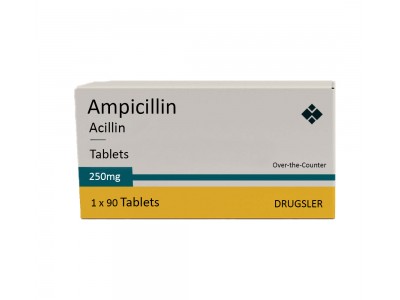Ampicillin (also known as Acillin) is an antibiotic commonly used to treat bacterial infections, including urinary tract infections (UTIs). But how effective is it when it comes to treating UTIs? This article explores the role of Ampicillin in treating urinary tract infections and whether it is the best option for this condition.
What Is Ampicillin and How Does It Work?
Ampicillin belongs to a class of antibiotics known as penicillins. It works by interfering with the ability of bacteria to form cell walls, ultimately killing the bacteria and stopping the infection from spreading. As a broad-spectrum antibiotic, Ampicillin is effective against a wide range of bacteria, including those responsible for UTIs.
What Are Urinary Tract Infections (UTIs)?
Urinary tract infections are caused by bacteria entering the urinary system, affecting the bladder, kidneys, or other parts of the urinary tract. The most common symptom of a UTI is a painful or burning sensation during urination, along with frequent urges to urinate.
Is Ampicillin Effective for Treating UTIs?
The effectiveness of Ampicillin for urinary tract infections largely depends on the specific bacteria causing the infection. While some bacteria are sensitive to Ampicillin, others may be resistant to this antibiotic. When prescribed for UTIs, Ampicillin is typically most effective against Escherichia coli (E. coli) and other gram-positive bacteria.
However, resistance to Ampicillin has been increasing over the years, particularly with certain types of E. coli strains that are more resistant to penicillin-based antibiotics. As a result, doctors may recommend alternative antibiotics, such as nitrofurantoin or trimethoprim-sulfamethoxazole, if Ampicillin is not effective in treating a specific UTI.
Ampicillin Dosage for UTIs
When Ampicillin is prescribed for UTIs, the dosage typically depends on the severity of the infection and the patient's health condition. For adults, the usual dosage for UTIs is 250–500 mg every 6 hours. However, it is important for patients to follow their doctor’s instructions to ensure proper treatment and avoid the risk of antibiotic resistance.
Side Effects of Ampicillin
Like any medication, Ampicillin may cause side effects. Common side effects include nausea, diarrhea, and allergic reactions. In rare cases, Ampicillin can lead to more severe reactions, such as skin rashes or difficulty breathing. If you experience any of these symptoms, it is important to seek immediate medical attention.
Alternatives to Ampicillin for Treating UTIs
While Ampicillin may be effective for some people with UTIs, it may not be the best option for everyone. Depending on the type of bacteria causing the infection, doctors may choose alternative treatments. Acillin is one alternative, although there are many other antibiotics used for UTI treatment, including ciprofloxacin, levofloxacin, and fosfomycin.
Ampicillin vs Other Antibiotics for UTIs
When comparing Ampicillin to other antibiotics used for UTIs, there are several factors to consider, including effectiveness, side effects, and resistance patterns. Ampicillin is often chosen when the bacteria are known to be sensitive to it, but other antibiotics such as trimethoprim-sulfamethoxazole may be more effective for some patients due to their broader spectrum of action.
Conclusion
In conclusion, Ampicillin can be effective for treating urinary tract infections caused by certain bacteria, but it is not always the best option. As antibiotic resistance becomes more prevalent, doctors may turn to other medications for UTI treatment. If you are diagnosed with a UTI, it is important to discuss all available treatment options with your healthcare provider to ensure you receive the most effective care for your condition.

